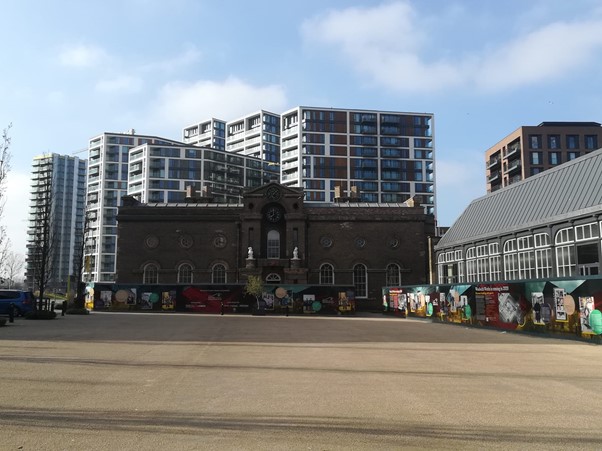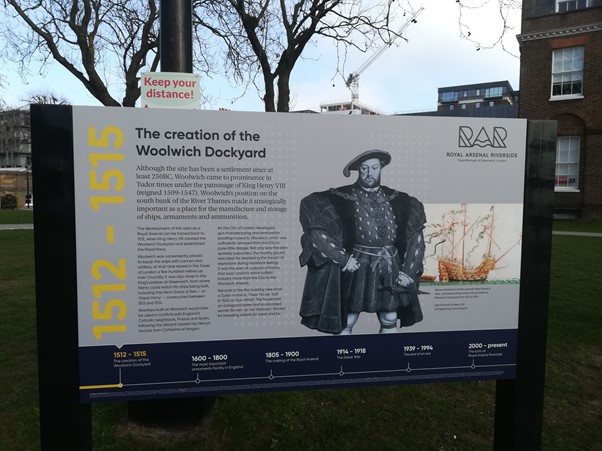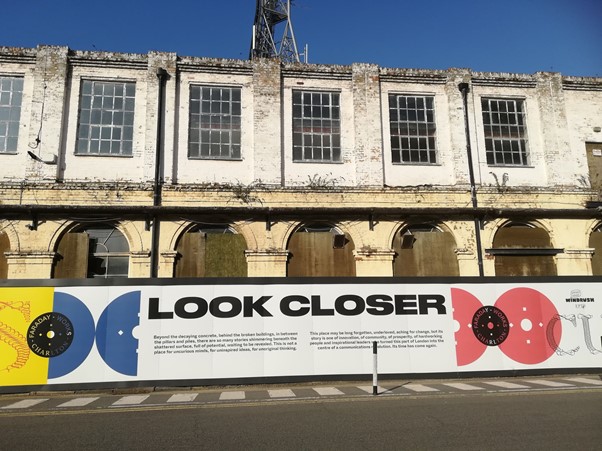‘DEEP’ STORIES IN HERITAGE PLACES UNDER TRANSFORMATION @ ROYAL ARSENAL, WOOLWICH, LONDON
By Kalliopi Fouseki, Professor in Sustainable Heritage Management at the UCL Institute for Sustainable Heritage (ISHI

During my river run this weekend at the Royal Arsenal – a conservation area since 1981 located opposite to the Woolwich Town Centre (also a conservation area since 2019) – I had the opportunity to experience our case study from the perspective of the everyday runner or walker.
Unlike the annual study visits in this area with my students at the MSc Sustainable Heritage, where we focus on the conservation and adaptive reuse of individual historic buildings and their integration into the rapidly transforming built environment, I was now looking at the open spaces and how they are used by people.
My attention was caught by a series of individual stories of local residents portrayed on a colourful banner which covers the future cultural centre, currently under construction, aimed to be housed in a historic building complex (Fig. 1).
The stories represent the cultural diversity of the area demonstrating the Council’s effort to bridge and better connect the quite disconnected Royal Arsenal development from the traditional Woolwich Town Centre and its communities.

Among those stories of the present (or recent past), other stories from the remote past, the ‘deep history’ of the place, are displayed on text panels, dispersed across the area (Fig.2).
These panels resemble those we find in archaeological sites or ‘official’ heritage places. It is the stories from the present and the past that captured my attention more than the buildings themselves, old or new.
Why is this? Stories are critical for uncovering the deep heritage and values of a place. Of course, the question still remains – whose stories?
How can we best capture the voices of the past and present while ensure that the multiplicity of stories is captured?

While reflecting on those questions, I kept running. I had just exited the river section of the Royal Arsenal when I came across to a neglected building awaiting its revival.
A big panel reads with capital letters – LOOK CLOSER – encouraging the passer-by to approach and explore the abandoned building despite its ‘unattractive’ appearance (Fig.3).

The panel reads:
Beyond the decaying concrete, behind the broken buildings, in between the pillars and piles, there are so many stories shimmering beneath shattered surface, full of potential, waiting to be revealed. This is not a place for uncurious minds, for uninspired ideas, for unoriginal thinking. This place may be long forgotten, underloved, aching for change, but its story is one of innovation, of community of prosperity, of hardworking people and inspirational leaders who turned this part of London into a centre of a communication revolution. Its time has come again.
More information was enhancing the panel of the building but as I had to keep running, I promised myself to revisit the building and find out more about its hidden, deep stories.
Reading a story can be a powerful means to revive material fragments of the past.
The stories of the past still need to represent contemporary communities and be integrated into the everyday built environment so that they are encountered unexpectedly, without guidance and instructions.

Leave a Reply